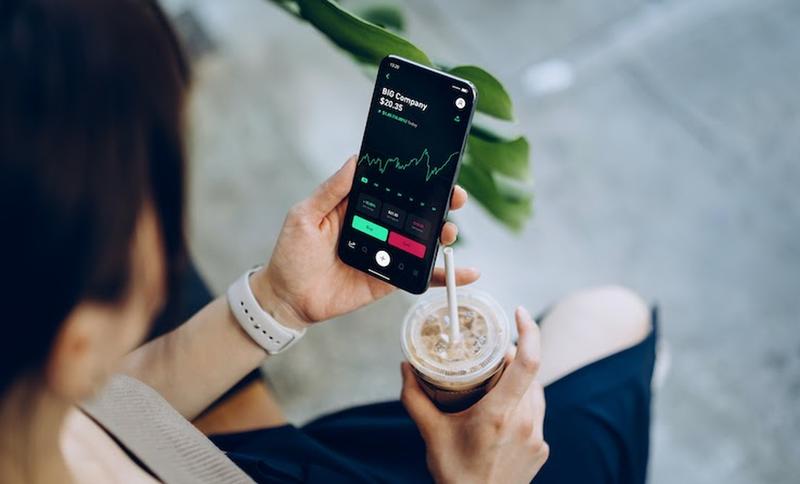
Stock-Trading Basics: Put and Call Options, Explained
When you first get into stock trading, you won’t go too long before you start hearing about puts, calls and options. But what exactly do they mean when it comes to the ways you buy and sell stocks? There are numerous ways you can use both calls and puts when trading, some of which can become quite complicated.
But don’t get intimidated just yet. Once you gain some solid foundational knowledge of these trading concepts, you can start applying it to a broader scope of situations as you become more confident in buying and selling stocks. First, start learning the fundamental basics of put and call options with easy-to-understand definitions and examples.
What Is Options Trading?

Before getting into precisely what calls and puts are, it’s important to discuss how both fall under the category of what’s known in the stock world as options trading. Options work a little differently than regular stock market trades in which you buy a stock and make money if its price rises or lose money if its price falls. When you buy an option, think of it as purchasing a contract that gives you the right (though not the obligation) to buy or sell a certain asset at an agreed-upon price before a specific date.
Options are one form of derivatives trading, which means that an option’s value depends on an underlying asset. Essentially, this means your option’s value depends on the value of the asset you’ve used to secure the right to buy or sell. For instance, if you buy a stock option, you’re typically purchasing the right to buy or sell shares of a stock by the option’s expiration date. Hence, the value of your option depends on whether the stock’s price goes up or down.
Options can be used to secure the right to buy or sell a variety of different assets before the contract’s expiration date. Some options cover stocks, while others cover bonds, currencies or other types of investments.
Why would you buy the right to purchase or sell something at your discretion rather than just outright purchasing or selling it? Mainly due to speculation. Options can come in handy if you think a particular asset is likely to either gain or lose value before your option expires. For the sake of simplicity, we’ll use stock options in the following examples to show you exactly how different types of options function.
How Do Call Options Work?

Buying a stock call option gives you the right to buy a certain number — often 100 — of stock shares for an agreed-upon price by a specific date. Calls are used to reserve the right to purchase these shares at a predetermined price, even if the stock’s price has gone up further. In this sense, you have the option to purchase them at the specified price, but you’re not obligated to do so.
Say that you read about a new company called XYZ, Inc. You do a bit of research and find that XYZ’s stock is currently trading on the market for $50 per share. However, you also discover that XYZ is going to come out with a hot new product soon. You feel confident in the future success of this product — so much so that you think it’ll launch the company’s stock value to $75 per share within three months.
If you were willing to bet money on this idea, you actually could in the form of a call option. By purchasing an option to buy 100 shares of XYZ at $60 apiece within the next three months, you stand a chance of getting lucky if your prediction pans out. Say that the stock price shoots up to $75 a share within three months. Because you bought the option, you could still buy 100 shares at $60 apiece, even though each one is actually worth $75.
That said, it’s important to be aware that this type of transaction isn’t without a potential disadvantage. To secure an option, you need to pay the option seller (or option writer) a premium for the right to buy the stock at that price. This is often calculated on a per-share basis; if your premium is $0.10 and you purchase 100 shares of a stock on an options contract, the contract will cost you $10. Think of a premium sort of like a hold that secures your reservation as a potential buyer.
If it turns out that the new product you were excited about falls flat, XYZ’s stock prices may drop. At the end of your 90-day option contract, the stock could be worth only $5 instead of the initial $50. In this case, you’d probably be unwise to exercise your right to purchase 100 shares for $60 each. While you wouldn’t be required to do so, you’d also lose your premium in the deal.
How Do Put Options Work?

In contrast to a call, which involves buying an asset, a put option allows you to sell an asset in a specified time frame and at a specified price. Similarly to a call option, you have to pay a premium to purchase a put on an asset, but it can be worth it under the right circumstances.
In this instance, say that you’re the owner of 100 shares of a startup called ABC, Inc. Currently, each of your 100 shares is worth $25. While you believe in ABC’s vision as a company, you’re also aware that startups can remain on shaky financial footings until they build consumer confidence and carve out niches in the market. In this example, imagine that ABC’s earnings turn out to be less than inspiring. Because you believe in the company, you’re not necessarily willing to give up on it just yet — but you don’t want your portfolio to take a nosedive, either.
At this point, you can buy a put option that allows you to sell your shares at $22.50 at any point during the following year. Note that the time period of a year is merely an example. You can select from a variety of prices and expiration dates for both puts and calls. An option might last as little as a few days or as long as a few years.
Regardless, say that the financial situation worsens over at ABC, Inc. seven months down the line, and its shares plummet in value to $10 each. At that point, you might choose to invoke your option rights; the option writer would be obligated to buy all 100 shares from you at the previously agreed-upon price of $22.50. Thus, your loss would be cushioned to no more than 10%, even if ABC’s share value ultimately dropped to a penny.
So why not just use a stop loss? Because put options give you a little more leverage when things aren’t quite so clear-cut. For instance, say that ABC is only hovering around $22 six months down the line — a price that would’ve triggered an automatic sale if you’d put in a stop loss at $22.50. By buying a put option instead, you can still hold onto your shares if you choose to, just in case the company rebounds over the next year and a half.
If ABC is able to pull off a comeback, that’s good news. If it’s not, then you don’t have to lose any sleep at night, no matter how many times the company’s stock prices fail to rebound. You know that as long as you take advantage of your put option by the expiration date, you’ll only lose 10%, no matter what.





